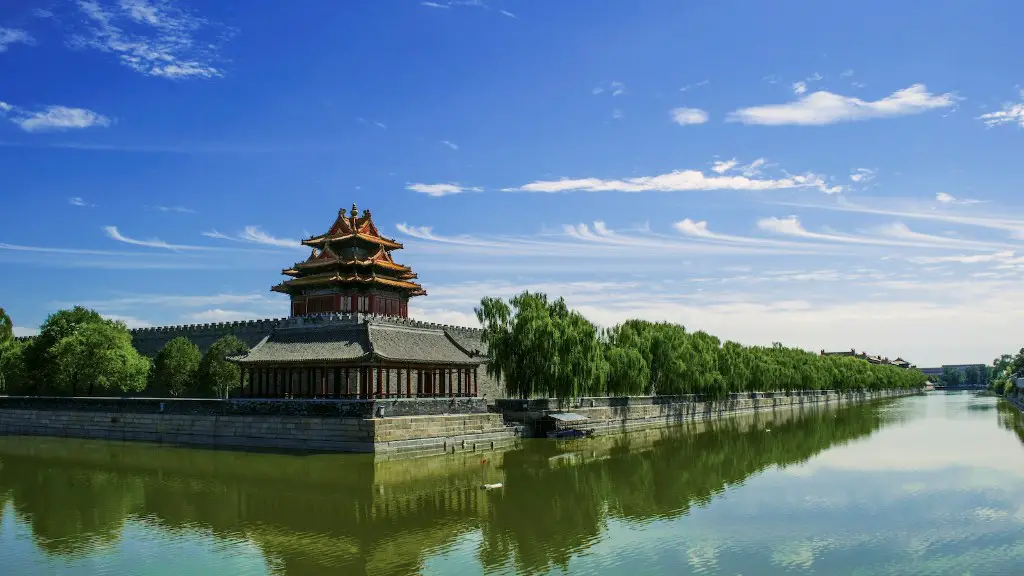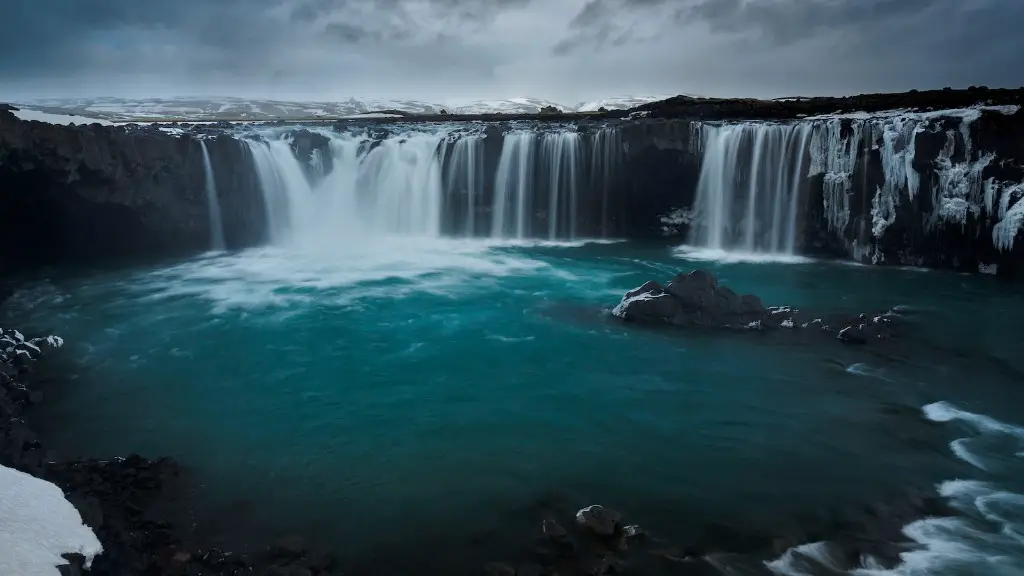The Mississippi River is critical for human and environmental health, but it is in danger. The river, which is the second longest river in the United States and the largest in North America, has been drying up in parts due to a combination of higher temperatures and less rain. As a result, the health of the region has been threatened, with dead fish, poor water quality, and decreases in wildlife populations.
The decrease in rainfall, particularly in the summer, has been a major factor in the drying-up of the river. Studies have found that, since the 1960s, the temperature of the region has increased by 3.5 degrees Fahrenheit, causing the snowpack and mountain runoff that feed the river to evaporate more quickly. Increased global temperatures have caused more precipitation in the form of rainfall, but the effect has not been enough to make up for the deficiency in snowpack.
The river has also been affected by human activities in the form of deforestation, farming practices, and development. As forests are cleared for agriculture, fewer trees are available to absorb and release water that would otherwise feed into the river system. Poor farming practices, such as overgrazing or excessive fertilizer application, can also cause soil erosion and send sediment and runoff into the river, decreasing its capacity to receive and store water.
The drying-up of the Mississippi River has had a number of consequences. Low water levels have caused problems for navigation and shipping, as well as economic losses to businesses that rely on the river. Low oxygen levels, which are decreased in still water, have caused fish and other organisms to die off, further reducing the river’s ecosystems.
The drying of the Mississippi River is a complicated problem that requires wide-reaching solutions. Experts suggest that better land management practices such as reducing fertilizer use, creating buffer zones along rivers, and replanting forests can help to reduce runoff and restore the health of the river system. In addition, limiting emissions from cars and other sources of pollution can help to keep water from evaporating too quickly.
The risk of the Mississippi River going dry should be a wake-up call for policy makers and citizens alike. With global temperatures set to rise, it is important that we take steps to protect and restore the river’s health before it is too late. If we act now, we can work to ensure that the Mississippi River continues to be a source of life and wealth for generations to come.
Societal impact
The potential of the river going dry has already had a big impact on the affected states’ societies. Take fishing as an example, which is a long-running activity for locals along the Mississippi, now has a diminished returns due to the decreased aquatic life. The livelihoods of many people who rely on fishing for food, as well as many business that have sprouted due to the river activities have been threatened. With the current narrative being set for the river’s future, fishing grounds may look vastly different in the years to come.
The decreased water flow also has had a great influence on the local economy. As tourism suffers due to the decrease in attractions such as swimming and boating, so do the vendors and other businesses that benefit when the river is busy. As a matter of fact, the local government has had to step in the invest in the rejuvenation of the river is the quality is not up to standard, something that would not normally be necessary if the water wasn’t decreasing in the first place.
On top of this, the river is used to provide a water source to many of the people who live along it. Low water flows can mean that more people than ever are relying on a cleaner and safer water source, something that can become increasingly difficult when states struggle to bring the river back to its former volumes. This is a sad reality for the people of the affected states.
Governmental Impact
The influence the Mississippi River going dry has also been felt at a governmental level. For example, The Army Corps of Engineers, in charge of the rivers maintenance, have had to step up their efforts in order to keep the river, and its surrounding environment, from being able to be degraded by regulated flows and other techniques.
In response to the decreasing amount of water, the government has had to implement more regulations on how much water people can use and how it is used. This has been met with resistance in the form of protests, but the future may still see these regulations become more stringent in order to preserve whatever water is left.
The government have had to change the way in which the river’s water is used, with more focus placed on conservation rather than capitalization. This means that projects such as water only being used for irrigational purposes would continue, whereas that same water would have been put to more commercial use as recently as five years ago.
Environmental Impacts
Environmentally, the problems with the drying of the Mississippi River are twofold. Firstly, the reduced water levels mean that the river becomes more volatile and less habitable, making it more difficult for native species to survive and creating more space for invasive species to move in. Furthermore, with less water to moderate the river’s temperature, it can become more extreme, resulting in further disruptions to the biome.
As the reduced water flow moves downstream, it also carries with it pollutants and sediment from upstream, leading to a greater chance of flooding in affected areas. Additionally, the pollutants increase the chance of algal blooms, which has been observed in the past, leading to further environmental degradation.
The decreased water flow has a global environmental impact as well. With less water in the river, any runoff from upstream that would have filled up the river is instead diverted elsewhere, potentially leading to even greater displacement of key ecological zones.
International Impact
The drying of the Mississippi River has had a great negative effect outside the United States as well. As more of the river is diverted, lake levels in other countries decrease as well. This can have drastic economic and environmental consequences for Mexico, Canada and other countries that rely on the Mississippi for water.
The decreased water volume can also create problems during periods of droughts, as it can limit access to clean water. This can be especially devastating in remote areas where access to safe drinking water is already in short supply.
The impacts of the drying of the Mississippi River are felt around the globe, and it is important that the United States takes steps to address the issue in order to restore the river to its former state.
Solutions
The drying of the Mississippi River has caused a great deal of harm to the affected countries and communities, but thankfully, there are a number of potential solutions available to help limit the damage and return the river to its former state.
The first step would be to reduce emissions, which are a major factor in global warming and in the drying of the Mississippi. Governments, corporations, and citizens alike should focus on limiting their carbon footprint in order to reduce global temperatures and restore the river.
In addition, better land management practices should be implemented. Planting trees and shrubs along the banks of the river can reduce runoff and sedimentation, while creating buffer zones between rivers and farmland can help to reduce fertilizer runoff.
Finally, improving conservation practices can help to reduce water usage and mitigate the effects of drought. Implementing water-saving strategies, such as reducing water wastage and offering incentives for citizens to conserve water, can go a long way in preserving the river for future generations.





